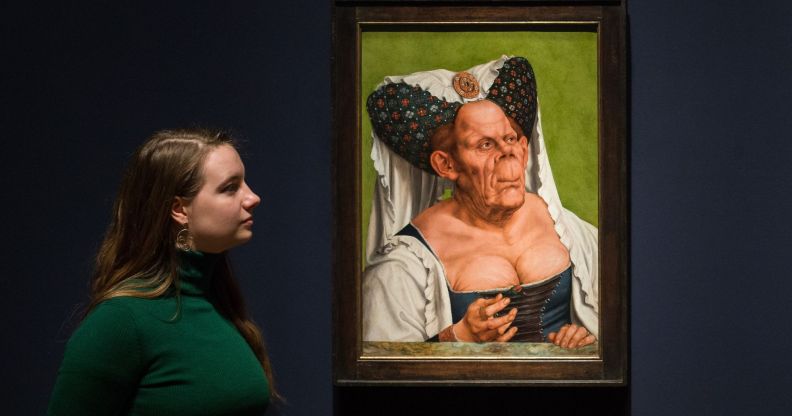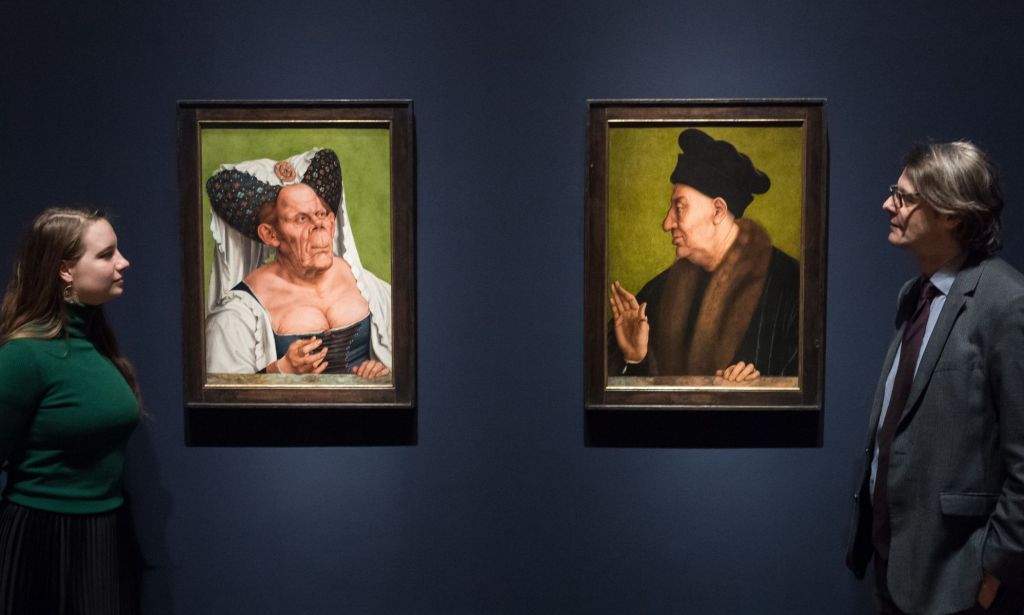Renaissance painting An Old Woman may actually be a man, research finds: ‘She is most likely a he’

The 16th century painting could be of a crossdressing man. (Getty)
A 16th-century painting, thought to be of an elderly woman, could turn out to be a man in drag, according to an expert.
The portrait An Old Woman by Flemish artist Quinten Massys, which has been on display at London’s National Gallery for more than 80 years, has historically been viewed as a satirical representation of old age and femininity.
But, in an interview with The Observer, Renaissance-art expert Emma Capron said: “She is most likely a he.”
According to Capron, it’s highly possible that the portrait is a larger-than-life depiction of a male crossdresser from a carnival show of the time.
She explained that Massys was “very interested in carnivals” and that crossdressing was common during such shows.
“The breasts, with their brazen and scandalous cleavage, are a Massys fantasy,” she added.
The strikingly droopy jowls and structure of the subject’s face were originally thought to have been due to Paget’s disease, a bone weakness, according to a 2008 report by researchers at University College London.

But Capron isn’t happy with those findings, saying that Massys’ exaggerated, almost cartoonish, painting spoke to more than just biology.
“It’s not Paget’s, nor any of the other suggestions like dwarfism of elephantiasis,” she said. “I’m really reluctant, too, to have doctors going around galleries and giving diagnoses.
“These grotesque images belong to a world which is upside down, as it were.”
The portrait of the aristocratic subject – dating from about 1513– became one of the inspirations for Sir John Tenniel’s drawing of the duchess in Alice’s Adventures in Wonderland.
A description by the London National Gallery reads: “Her exaggerated facial features, devil-like head-dress, low-cut dress and wrinkled bosom were used by Massys to parody the traditional marriage portrait.
“This is an old woman acting like a maiden and offering her partner – who is more formally and soberly dressed – an unrequited token of her love.”
It is one half of a set, with the other half being Portrait of an Old Man, which was thought to depict the aristocrat’s husband.
The pair will be reunited as part of a new exhibition, The Ugly Duchess: Beauty and Satire in the Renaissance, which will run from Thursday (16 March) until 11 June.
How did this story make you feel?

